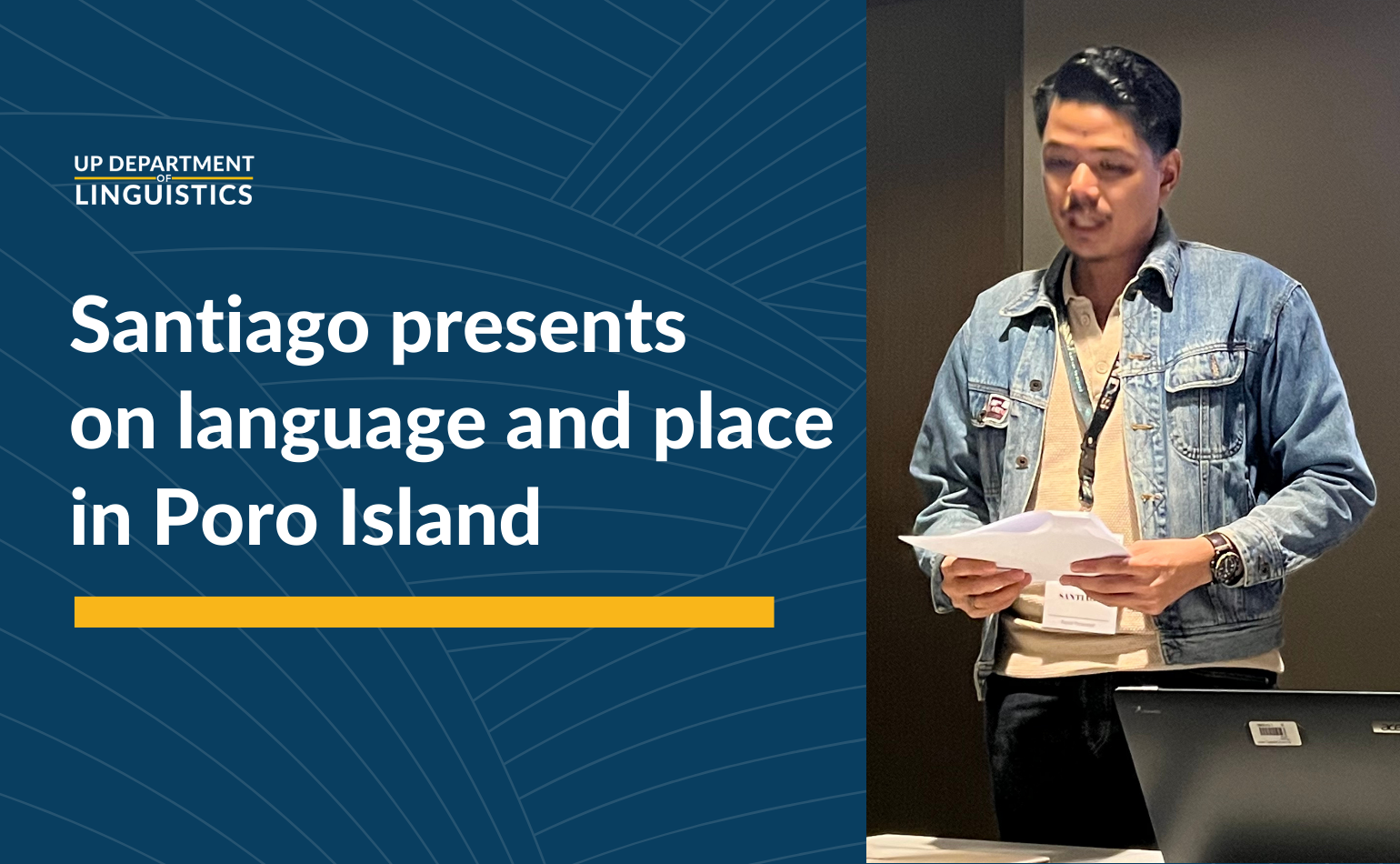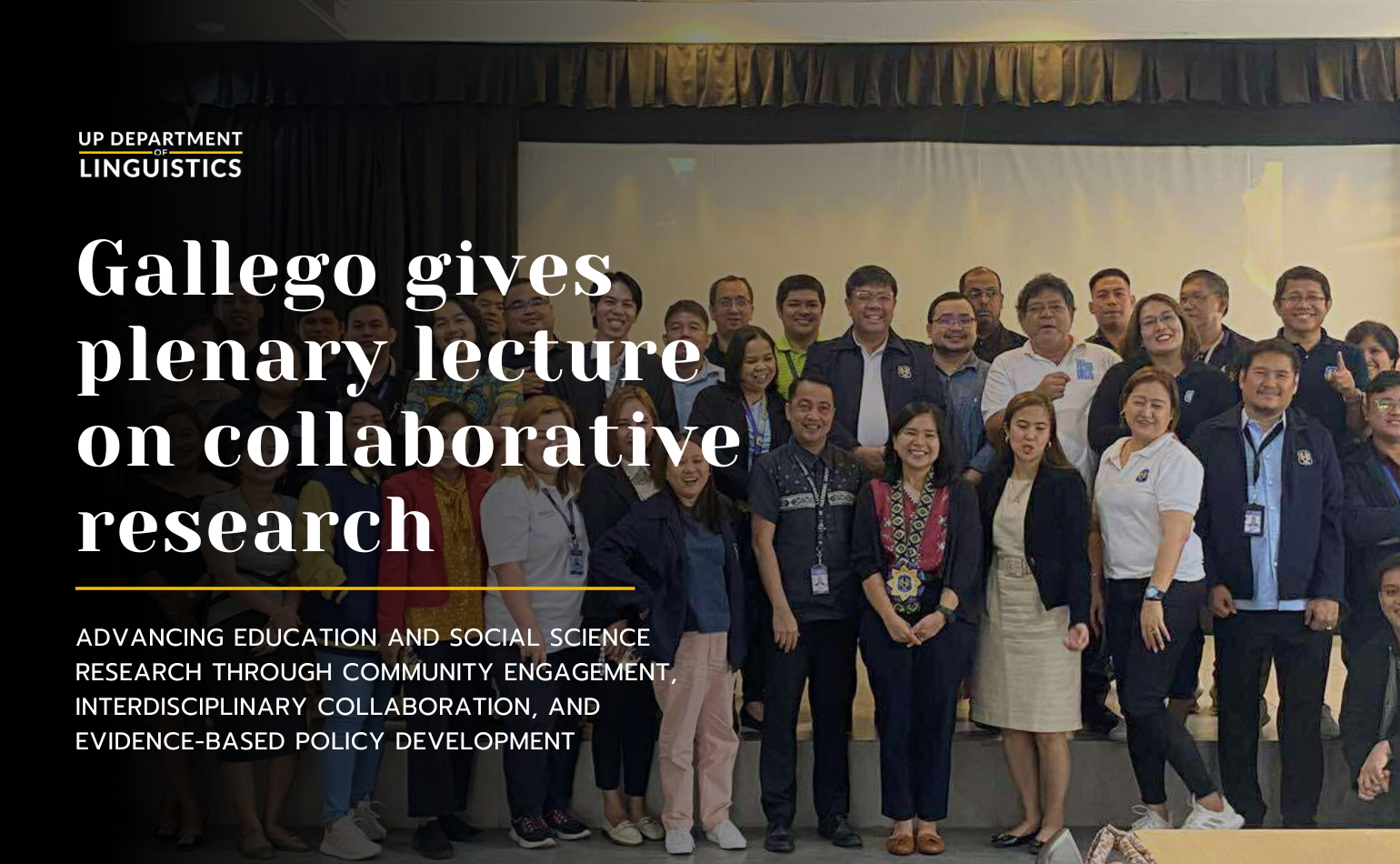
Instructor Vincci Santiago recently read his paper, “Language and Place in Poro, Camotes, Cebu,” at the 2024 Critical Island Studies (CIS) Conference held at De La Salle University – Manila on 03 October. The CIS consortium aims to “develop a new planetary perspective from which to invent an image of the environment and create a new sense of nature to seek environmental justice.”
Below is Santiago’s abstract:
The Language and Place in Poro, Camotes, Cebu
This paper analyzes the encoding of place in the Porohanon language (ISO 639-3 code prh), spoken by approximately 26,000 people primarily in the Municipality of Poro, Camotes Islands, Cebu, Philippines (Santiago, 2023). In this study, “encoding of place” encompasses: i.) terms for cardinal directions and their specific geographic reference points on the island of Poro and its neighboring regions, ii.) a highly elaborate lexicon for fishing and maritime travel, and iii.) mixed grammatical features with the languages of neighboring islands. I contend that cutting across these three general areas is a close relationship between Poro’s high relative insularity and the Porohanon language. Through ethnographic and linguistic data gathered during fieldwork in the years 2018 and 2022, a key informant interview, analysis of primary historical sources (Alcina [Main Author], Kobak, & Gutiérrez [Translators & Annotators], 2002), municipal fiesta souvenir programs, and content uploaded in the Facebook page Camotes Balirong Vlog (Camotes Balirong Vlog, n.d.), an argument for acknowledging “islandness” as manifested in a language’s structure is forwarded. The strongest version of this argument–that the natural environment automatically determines the structure of a language–is rejected in favor of a more nuanced consideration of the connection; that the environment must have some role in shaping the structures possible and available for a language’s users.
Keywords: Porohanon; Island Languages; Island Studies;
Environmental Possibilism
It is part of the themed panel, “Words, Things, Worlds: Social Science Perspectives on Island, Islandness, and Island Studies.” Below is the session’s general abstract:
Words, Things, Worlds:
Social Science Perspectives on Island, Islandness, and Island Studies
This panel gathers four papers from practitioners of linguistics, archaeology, and history. Corresponding to “words,” Santiago delves into the complex relationship between language, people, and the island environment through a study of the Porohanon language spoken primarily in the Municipality of Poro, Camotes Islands, Cebu. On “things,” Tablan argues for the necessary integration of island archaeology into critical island studies, emphasizing an eye on artifacts that leads to the proposition, if not application, of archaeological concepts such as materiality, adaptability, and networks. Seemingly bridging “things” and “worlds”, Garcia’s study looks into the role of commensal organisms in uncovering patterns of movement in early human populations. Lastly, for “worlds,” Bolata forwards the perceptual concept of muling from Marinduque Tagalog, in order to reassess non-islander perceptions on island and disasters. Through their own strengths and specialization, these papers attempt to interrogate established ideas, theories, and discourses on island, islandness, and (critical) island studies, and, hopefully, introduce novel perspectives to what can be called Philippine or Southeast Asian Island Studies. Overall, the panel aims to surface some “concepts from the ground”; ideas, views, and realities that are specific to archipelagic environments. Can we gesture toward an archipelagic philosophy contrasted with the more traditional category of continental philosophy?

Published by UP Department of Linguistics



